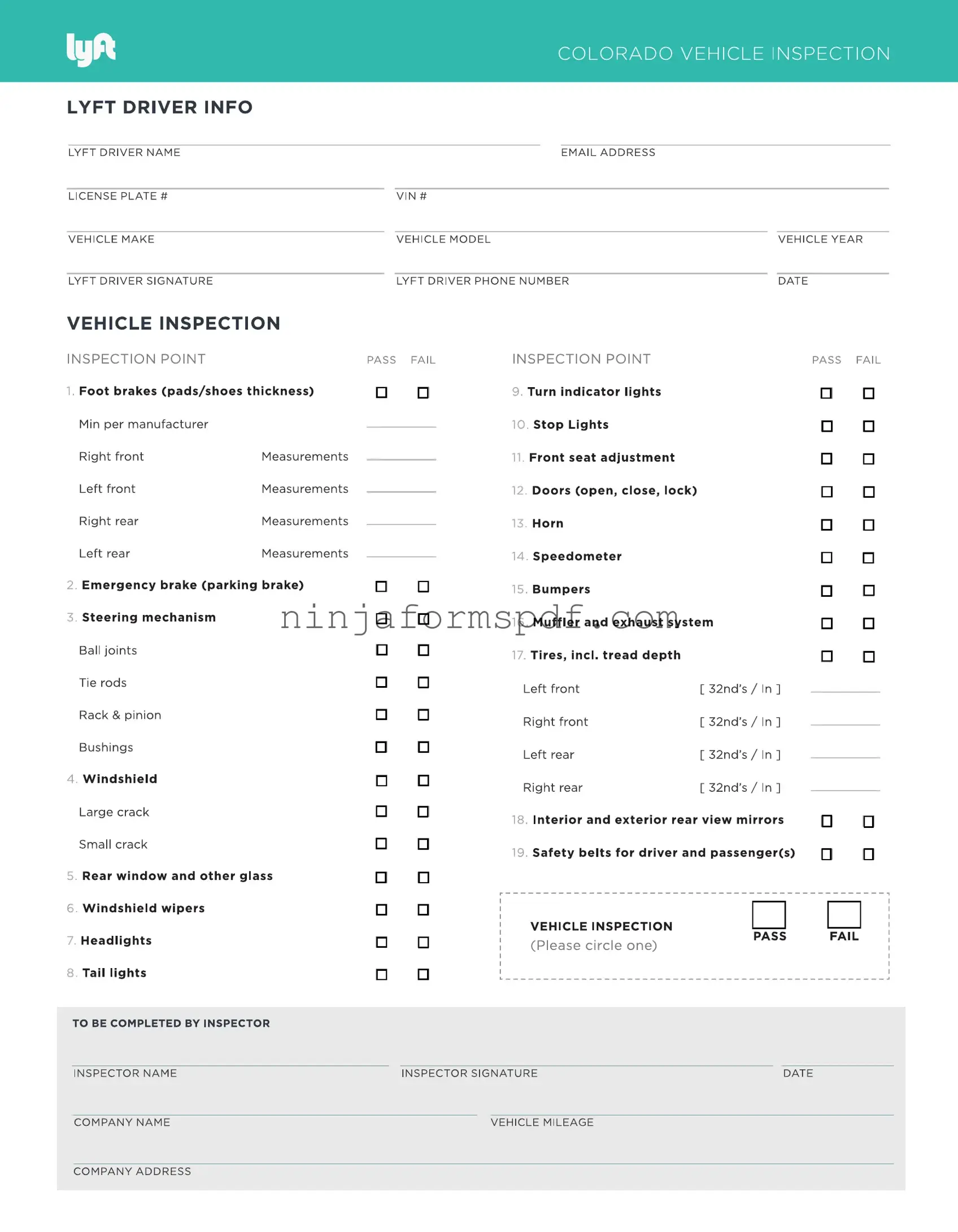The Lyft Inspection Form is closely related to the Uber Vehicle Inspection Form. Both assess a vehicle's safety features, such as brakes, lights, and tires, to ensure the car is safe for passengers. These forms are typically completed by a certified mechanic and must be submitted to the respective ride-sharing company to confirm the vehicle meets their safety standards. The resemblance lies in their purpose to enhance passenger safety by ensuring all cars on their platforms are in good condition.
Similarly, a State Vehicle Inspection Form, required by various states for all vehicles, echoes the Lyft Inspection Form. These state inspections check for safety and, in some areas, emissions. By ensuring vehicles adhere to specific safety standards, such forms protect public safety on the roads. The primary similarity here is the focus on maintaining vehicles in a condition that prevents accidents and ensures environmental cleanliness.
The Annual Vehicle Inspection Report, mandated by the Department of Transportation (DOT) for commercial vehicles, is another related document. It covers a comprehensive checklist, including the brake system, steering mechanism, and lighting devices. This document ensures that commercial vehicles are thoroughly inspected at least once a year for safety compliance, mirroring the Lyft Inspection Form's safety assurance goal.
A Pre-Trip Inspection Form, used by truck drivers before embarking on a journey, shares similarities with the Lyft Inspection Form. It involves a detailed check of the vehicle's operational aspects to prevent on-road failures. Although the scope might differ, focusing more on long-haul vehicle specifics, the core intent aligns: ensuring a vehicle’s readiness and safety for its intended use.
The Car Rental Inspection Form is another document with parallels to the Lyft Inspection Form. Before and after a rental period, this form is employed to document the car's condition, noting any damages or mechanical issues. This preventive measure, much like the Lyft Inspection Form, is designed to ensure the vehicle provided to renters is safe and in good working order.
An Auto Insurance Inspection Form, required by some insurance companies before issuing a policy, also shares similarities. This inspection helps to verify the vehicle's physical condition and confirm its existence before coverage begins, focusing on aspects that affect its insurability and safety. This form, like the Lyft Inspection Form, plays a crucial role in confirming the adequacy of the vehicle for its intended purpose.
The Home Care Vehicle Inspection Form, used by home care agencies for employees using their vehicles for work, mirrors the Lyft Inspection Form's intentions. It checks the safety and reliability of vehicles used in providing home care services, ensuring they do not pose a risk to clients or employees. Safety, once again, is the pivotal similarity.
A School Bus Inspection Checklist is designed to ensure that school buses are in optimal condition to safely transport students. This checklist includes items like emergency exits, seating, and the functionality of lights and signals. The prime resemblance is in prioritizing passenger safety and ensuring that the vehicle meets specific operational standards.
Lastly, the Motor Vehicle Periodic Inspection Report for rental fleets inspects vehicles between leases to determine their condition. It aims to maintain high standards of safety and performance, ensuring each vehicle is ready for the next customer. The focus on vehicle readiness and safety in both documents highlights their principal commonality.

